Is Your Office Chair Causing Back Pain? Discover Ergonomic Solutions
Choosing an uncomfortable office chair may cause back pain. Make sure your chair has adjustable features like lumbar support and armrests for better posture. Non-ergonomic chairs can lead to discomfort and potential back issues. Look for chairs with customizable options to tailor to your needs. Proper lumbar support and adjustable seat height are key for spine health. If you want to work comfortably and prevent back pain, ergonomic chairs are the way to go. Find the ideal chair that suits your needs and stay productive all day long.
Introduction

Experiencing back pain while sitting in an office chair is a common issue that many individuals face daily. To mitigate this discomfort, incorporating healthy habits, such as frequent breaks to stretch and move around, is essential.
Additionally, focusing on posture improvement by ensuring the chair is adjusted to support the natural curve of the spine can greatly aid in pain prevention. Workplace wellness programs that promote ergonomic practices and educate employees on proper sitting positions can also play a key role in reducing back pain.
Moreover, investing in chairs with adequate back support is vital for maintaining a healthy posture and minimizing strain on the back muscles. These chairs should offer adjustable lumbar support to accommodate individual needs.
How to recognize a non-ergonomic chair
Let’s start by evaluating your chair to determine if it’s ergonomic.
Look for adjustable features like seat height, armrests, and lumbar support.
Non-ergonomic chairs often lack these customizable options, leading to discomfort and potential back pain.
Evaluating your chair
Let’s evaluate our chairs for ergonomic features.
Check if the chair provides sufficient lumbar support and if the cushion remains comfortable for long periods of sitting.
Confirm that your feet can rest flat on the floor and that the chair back tilt angle is adjustable to promote proper posture.
Is the lumbar support in place?
Check if the chair you’re using has proper lumbar support by ensuring that there’s a firm cushion or adjustable mechanism at the lower back area.
Lumbar support effectiveness is essential for maintaining good posture. A lack of support can lead to discomfort and back pain.
When evaluating your chair, consider natural feet positioning, an adjustable tilt angle, and overall office chair selection to prioritize ergonomic design and user comfort.
Does the cushion remain comfortable during prolonged sitting?
Evaluating the comfort of the cushion during extended periods is essential for determining the ergonomic quality of your office chair.
The cushion material, longevity comfort, supportive padding, posture correction, and pressure distribution are key factors to take into account.
A well-designed cushion should provide adequate support, maintain comfort over time, promote proper posture, and evenly distribute pressure to prevent discomfort during prolonged sitting.
Do the feet rest naturally flat on the floor?
Ensuring that your feet rest naturally flat on the floor is an important aspect to take into account when evaluating the ergonomic quality of your office chair.
-
Footrest options: Consider adjustable footrests for proper leg support.
-
Chair height: Adjust the chair height to maintain a 90-degree angle at your knees.
-
Leg positioning: Aim for feet flat on the floor to promote better posture and circulation.
Is the tilt angle of the chair back adjustable?
Adjusting the tilt angle of the chair back is essential for ensuring proper support and comfort to prevent back pain.
Having an adjustable tilt angle allows for dynamic movement, reducing pressure on the spine and promoting good posture.
This ergonomic design feature enhances workplace comfort, providing health benefits by supporting the natural curvature of the spine and preventing musculoskeletal issues associated with prolonged sitting.
Choosing the right office chair

When selecting the right office chair, it’s essential to take into account the characteristics of an ergonomic chair.
Look for adjustable seat height, lumbar support, and adequate cushioning to support proper posture and reduce back pain.
These features promote comfort and decrease the risk of musculoskeletal issues associated with prolonged sitting.
Characteristics of an ergonomic office chair
When selecting an ergonomic office chair, it’s important to look for features like adjustable lumbar support, height, and tilt options. Additionally, prioritize chairs with comfortable and breathable cushioning to support long hours of sitting.
Don’t forget to choose a chair with armrests that can be adjusted in height to guarantee proper arm and shoulder support.
Adjustable lumbar support
With adjustable lumbar support, an ergonomic office chair provides essential lower back comfort and alignment for improved sitting posture.
Customizable Comfort: Tailor the lumbar support to your unique needs for best relief.
Spinal Alignment: Maintain proper curvature of the spine to reduce strain and prevent discomfort.
Postural Support: Promote healthy sitting habits by adjusting the lumbar region to support your back effectively.
Adjustable height and tilt
Adjusting the height and tilt of an ergonomic office chair is essential for achieving maximum comfort and support during long hours of work. Consider seat cushioning and tilt, armrest height, lumbar support, back angle, footrest options, chair height, and armrest comfort.
These ergonomic features provide a range of adjustability options to customize the chair to your body, ensuring proper alignment and reducing the risk of back pain.
Comfortable and breathable cushion
A comfortable and breathable cushion is an essential feature of an ergonomic office chair. It helps distribute weight evenly and promotes good posture.
Supportive padding that molds to your body shape
Breathable design to prevent overheating
Comfortable cushioning for long hours of sitting
These features are vital in providing ergonomic solutions and aiding in back pain relief.
Armrests with height adjustable armrests
Armrests with height adjustable features are key components of an ergonomic office chair, contributing to proper arm support and overall comfort during extended periods of sitting. The adjustability of armrests allows for personalized positioning, enhancing comfort and reducing strain. Benefits include improved posture, decreased risk of musculoskeletal issues, and increased productivity. Proper usage involves aligning armrests with desk height to support natural arm positioning.
| Armrest Adjustability | Armrest Comfort |
|---|---|
| Personalized positioning | Enhanced support |
| Reduced strain | Improved posture |
Additional office posture tips
Here are some additional office posture tips to help alleviate back pain and discomfort.
Standing up and moving around for a few minutes every hour can reduce strain on your back.
Keeping your computer screen at eye level, using a footrest, and incorporating simple office stretches into your routine can also promote better posture and minimize back pain.
Tips for improving posture
Our team recommends adjusting your chair height so that your feet are flat on the ground and your knees are at a 90-degree angle to improve your posture while working in the office. Here are some additional tips to help you maintain a healthy sitting posture:
-
Engage in posture exercises: Incorporate simple exercises like shoulder rolls, neck stretches, and back extensions to prevent stiffness and improve muscle strength.
-
Utilize proper back support: Use chairs with adequate lumbar support or consider adding a lumbar pillow to maintain the natural curve of your spine and reduce strain on your lower back.
-
Optimize your sitting position: Sit all the way back in your chair with your back supported, avoid crossing your legs, and keep your computer screen at eye level to reduce neck strain.
Stand up and move around for a few minutes every hour
To further alleviate back pain caused by prolonged sitting, it’s recommended to stand up and move around for a few minutes every hour to promote circulation and relieve muscle tension.
Incorporating stretch breaks into your work routine can help combat the negative effects of prolonged sitting. Consider using standing desks periodically throughout the day to vary your posture and reduce the strain on your back.
Engaging in posture exercises during these breaks can also strengthen your core muscles, supporting a healthier back. Additionally, exploring alternative seating options such as ergonomic chairs or stability balls can help improve your sitting posture and reduce back discomfort.
Investing in ergonomic accessories like lumbar cushions or footrests can further enhance your seating setup and promote a more comfortable and supportive work environment.
Keep your computer screen at eye level
Maintaining your computer screen at eye level is crucial for proper posture and reducing strain on your neck and upper back muscles while working at your desk. Here are three key tips to help you optimize your screen height and improve your overall posture:
-
Adjust your monitor: Position your computer screen so that the top of the screen is at or slightly below eye level. This alignment helps in keeping your neck in a neutral position, reducing the risk of neck strain.
-
Use a monitor stand: If needed, invest in a monitor stand to elevate your screen to the correct height. This simple addition can greatly assist in maintaining proper eye level alignment and preventing discomfort.
-
Check your screen distance: Make sure your screen is an arm’s length away from you. This distance is ideal for minimizing eye strain and promoting a good sitting posture, ultimately reducing the likelihood of back pain associated with poor screen positioning.
Use a footrest to keep your legs comfortable
Using a footrest can greatly enhance comfort and posture while sitting at your desk for extended periods. It provides comfortable support for your legs, helps in maintaining proper alignment, and prevents fatigue by improving leg circulation. A footrest is a simple yet effective tool to promote better posture and reduce the risk of developing musculoskeletal issues.
To fully grasp the benefits of using a footrest, take a look at the table below:
| Benefits | Description |
|---|---|
| Leg Circulation | Elevating your feet can aid in blood flow, reducing the risk of swelling and discomfort. |
| Proper Alignment | Helps in aligning your spine and hips correctly to prevent strain on your lower back. |
| Comfortable Support | Provides a stable surface for your feet, reducing pressure points and enhancing comfort. |
Do some simple office stretches regularly
Regularly performing simple office stretches throughout the day can help alleviate muscle tension, improve flexibility, and enhance overall posture while working at a desk.
Here are three effective stretch breaks and office exercises to incorporate into your daily routine for better back support and posture tips:
-
Neck Rolls: Start by slowly rolling your head in a circular motion, first clockwise and then counterclockwise. This exercise helps release tension in the neck and upper back.
-
Shoulder Blade Squeezes: Sit up straight, squeeze your shoulder blades together, and hold for a few seconds before releasing. This move strengthens the upper back muscles, promoting better posture.
-
Seated Spinal Twist: While seated, twist your torso to one side, using the back of your chair for support. Hold the twist for 15-30 seconds on each side to increase spinal flexibility and reduce stiffness.
Incorporating these simple office stretches and exercises, along with proper chair adjustments, can significantly enhance your posture and reduce the risk of back pain associated with long hours of desk work.
Product Recommendations

We recommend considering the following Logicfox ergonomic chairs for alleviating office chair back pain:
- Logicfox Ergonomic Chair Pro
- Logicfox Ergonomic Chair Ultra
- Logicfox Ergonomic Chair Task
These chairs are designed to provide proper support and promote good posture, which can help reduce discomfort and strain on the back.
Investing in a quality ergonomic chair is essential for maintaining a healthy and comfortable work environment.
Logicfox Ergonomic Chair Pro
The Logicfox Ergonomic Chair Pro caters to individuals seeking extensive back pain relief solutions with its customizable lumbar support, adjustable headrest, and 3D armrests.
This chair, weighing 38 lbs when assembled, features a durable nylon plastic frame and a highly elastic mesh for comfort. With dimensions of 31.5L x 31.5W x 46 - 49H, it offers a saddle-shaped seat with memory foam lumbar support to reduce strain during long sitting periods.
The chair is BIFMA certified for safety and durability, accommodating various body types up to 330 lbs. Its skin-friendly materials and ergonomic design not only promote proper posture but also contribute to a healthier working environment by reducing musculoskeletal disorders.
Best For: Individuals looking for extensive back pain relief and ergonomic support in a chair designed for long hours of sitting.
Pros:
- Customizable lumbar support and adjustable headrest for personalized comfort
- Highly elastic mesh and memory foam lumbar support for enhanced comfort during long periods of sitting
- Durable nylon plastic frame and BIFMA certification ensure safety and durability
Cons:
- Weighs 38 lbs when assembled, which may be heavier for some users
- No shipping to Alaska, Hawaii, PO BOXES, or APO, limiting availability to certain regions
- Return shipping cost applies after the 30-day trial period
https://www.logicfox.net/collections/ergonomic-chair/products/ergonomic-chair-pro
Logicfox Ergonomic Chair Ultra
Ideal for individuals seeking advanced ergonomic support, the Logicfox Ergonomic Chair Ultra offers a thorough solution for alleviating back pain and promoting ideal sitting posture.
This chair comes with a special cervical and thoracic support pad, 11 adjustment points for posture customization, adjustable lumbar support, headrest, seat height, and tilt tension.
The 3D armrests provide shoulder pressure relief, while the mesh back and seat guarantee ventilation and comfort during extended periods of sitting.
With a 3-year warranty, 30-day trial period, and free shipping within the lower 48 states in the US, the Logicfox Ergonomic Chair Ultra prioritizes customer satisfaction.
Its durability, safety certifications, and accommodation of various body sizes make it a reliable choice for those seeking a premium ergonomic seating solution.
Best For: Individuals seeking advanced ergonomic support and relief from back pain while prioritizing customization and comfort in their seating experience.
Pros:
- Specialized cervical and thoracic support pad for enhanced comfort.
- 11 adjustment points for personalized posture customization.
- Mesh back and seat design for ventilation and extended comfort during long periods of sitting.
Cons:
- Shipping restrictions to certain areas may limit accessibility.
- May be considered a higher-priced option compared to basic office chairs.
- Some users may find the assembly process slightly complex.
https://www.logicfox.net/collections/ergonomic-chair/products/ergonomic-chair-ultra
Logicfox Ergonomic Chair Task
With its adaptive 2D lumbar support and adjustable features, the Logicfox Ergonomic Chair Task is a suitable choice for individuals seeking relief from office chair-induced back pain.
This chair offers a range of color options, including white, khaki, blue, black, and green, allowing for customization to suit various office aesthetics.
While currently out of stock, the chair is priced at $189.00, down from its regular price of $239.00, providing a $50.00 discount.
Additionally, customers can opt for a convenient monthly payment plan starting as low as $47.25 for 4 payments at 0% APR.
The Logicfox Ergonomic Chair Task comes with a 3-year warranty, a 30-day trial period with a return option (return shipping fee applies after 30 days), and free shipping to the lower 48 states in the US.
Best For: Office workers seeking relief from back pain and customizable chair options for their workspace.
Pros:
- Adaptive 2D lumbar support for personalized comfort and ergonomic benefits.
- Adjustable features including seat height, tilt, and tension for optimal sitting posture.
- Range of color options for customization to suit various office aesthetics.
Cons:
- Currently out of stock, potentially leading to longer wait times for interested buyers.
- Monthly payment plan may not be feasible for all customers, especially those preferring a one-time payment.
- Shipping restrictions to certain areas may limit accessibility for interested buyers in those regions.
https://www.logicfox.net/collections/ergonomic-chair/products/ergonomic-task-chair
Share your experience of using chairs in the office or ask questions
Sitting in an office chair for extended periods can lead to discomfort and back pain if not properly addressed. Our team has navigated through various office chair preferences to find the most suitable options for our workspace.
Here are a few insights we’ve gathered:
-
Adjustable Lumbar Support: Opting for chairs with adjustable lumbar support has notably reduced our team’s back pain issues. This feature allows for personalized comfort and better spine alignment.
-
Breathable Mesh Material: Chairs made with breathable mesh material have been a game-changer in maintaining a comfortable temperature during long work hours, preventing excessive sweating and discomfort.
-
Height-Adjustable Armrests: Investing in chairs with height-adjustable armrests has improved our sitting posture by providing adequate support for our arms, reducing strain on the shoulders and neck.
Frequently Asked Questions
Can I Use a Standing Desk Instead of an Ergonomic Chair?
We’ve found that incorporating a standing desk alongside ergonomic chair alternatives can offer a well-rounded approach to improving comfort and posture.
While standing desk benefits include reducing sedentary behavior and potentially alleviating back pain, it’s essential to remember that standing for prolonged periods can also strain muscles.
To manage this, integrating standing desk exercises, ergonomic chair vs. standing desk balance, and ergonomic accessories can help optimize your workspace ergonomics.
Are There Exercises I Can Do to Alleviate Back Pain From Sitting?
To alleviate back pain from sitting, incorporate desk stretches, yoga poses, core exercises, Pilates moves, and resistance bands into your routine. These activities can help strengthen and stretch key muscles, improving posture and reducing discomfort.
Consistency is key for long-term relief, so aim to practice these exercises regularly. Remember to consult with a fitness professional or healthcare provider to guarantee proper form and technique.
How Often Should I Take Breaks From Sitting in My Office Chair?
When it comes to taking breaks from sitting in our office chairs, it’s crucial to prioritize movement. Incorporating stretch breaks, posture tips, desk exercises, chair alternatives, and using lumbar support can help alleviate back pain.
Experts recommend taking microbreaks every 30 minutes to stand, stretch, and realign our bodies. By following these strategies, we can maintain peak spinal health and prevent discomfort associated with prolonged sitting.
What Are the Benefits of Using a Balance Ball Chair at Work?
Using a balance ball chair at work offers numerous benefits. It promotes core strengthening, improves posture, and encourages active sitting.
This type of chair also enhances stability and circulation. By engaging your core muscles to maintain balance, you can prevent back pain and improve overall wellness.
Adopting a balance ball chair can positively impact your workday and long-term health.
Can Using a Footrest Help Improve My Posture While Sitting?
Using ergonomic footrests can greatly improve posture support while sitting. By elevating the feet slightly, it helps maintain proper alignment of the spine, reducing strain on the lower back.
This simple adjustment promotes healthier sitting positions, which can lead to back pain relief and overall better office ergonomics.
Incorporating a footrest into your workspace setup is a practical solution for enhancing comfort and productivity during long hours at the desk.
Conclusion
In summary, finding the right ergonomic office chair is essential for preventing back pain and improving posture.
Remember, a good chair is like a supportive friend - it will have your back (literally!) and make your workday more comfortable and productive.
Don’t settle for discomfort, invest in a chair that fits your body and needs. Your back will thank you!


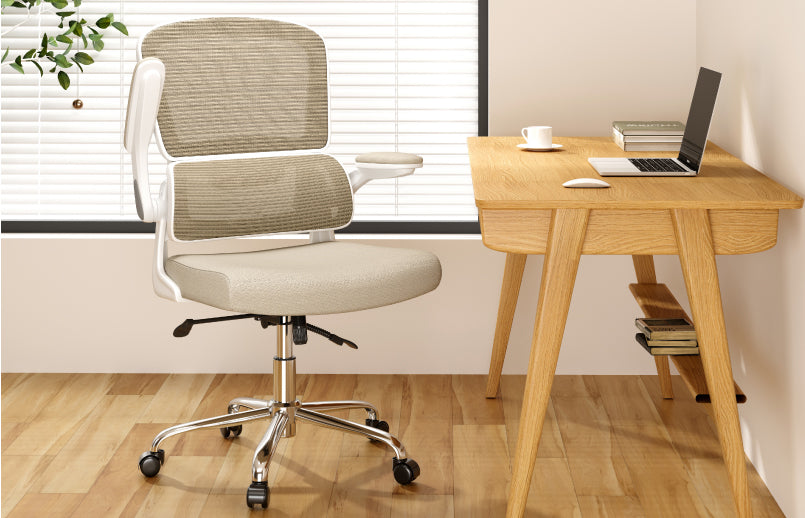
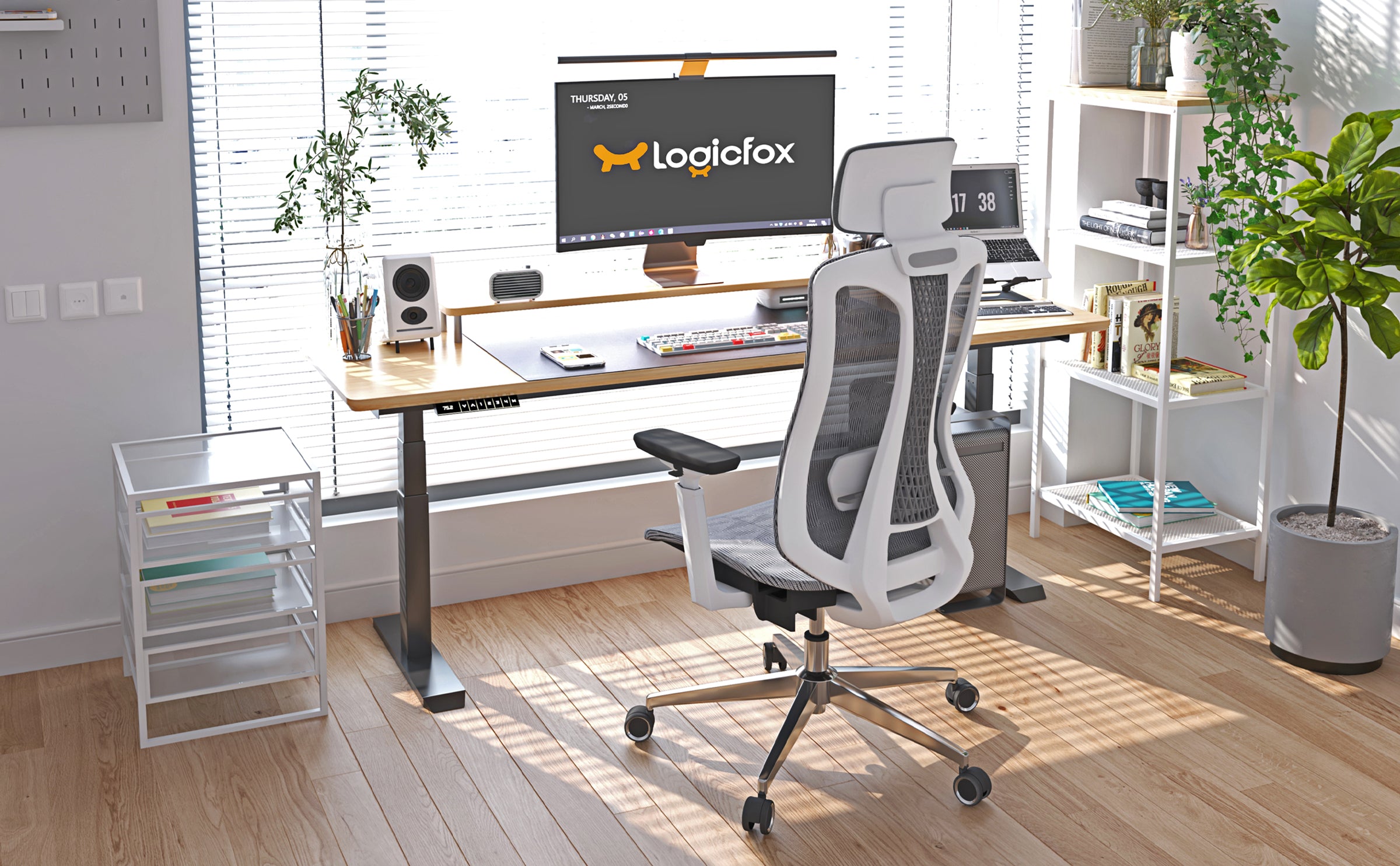
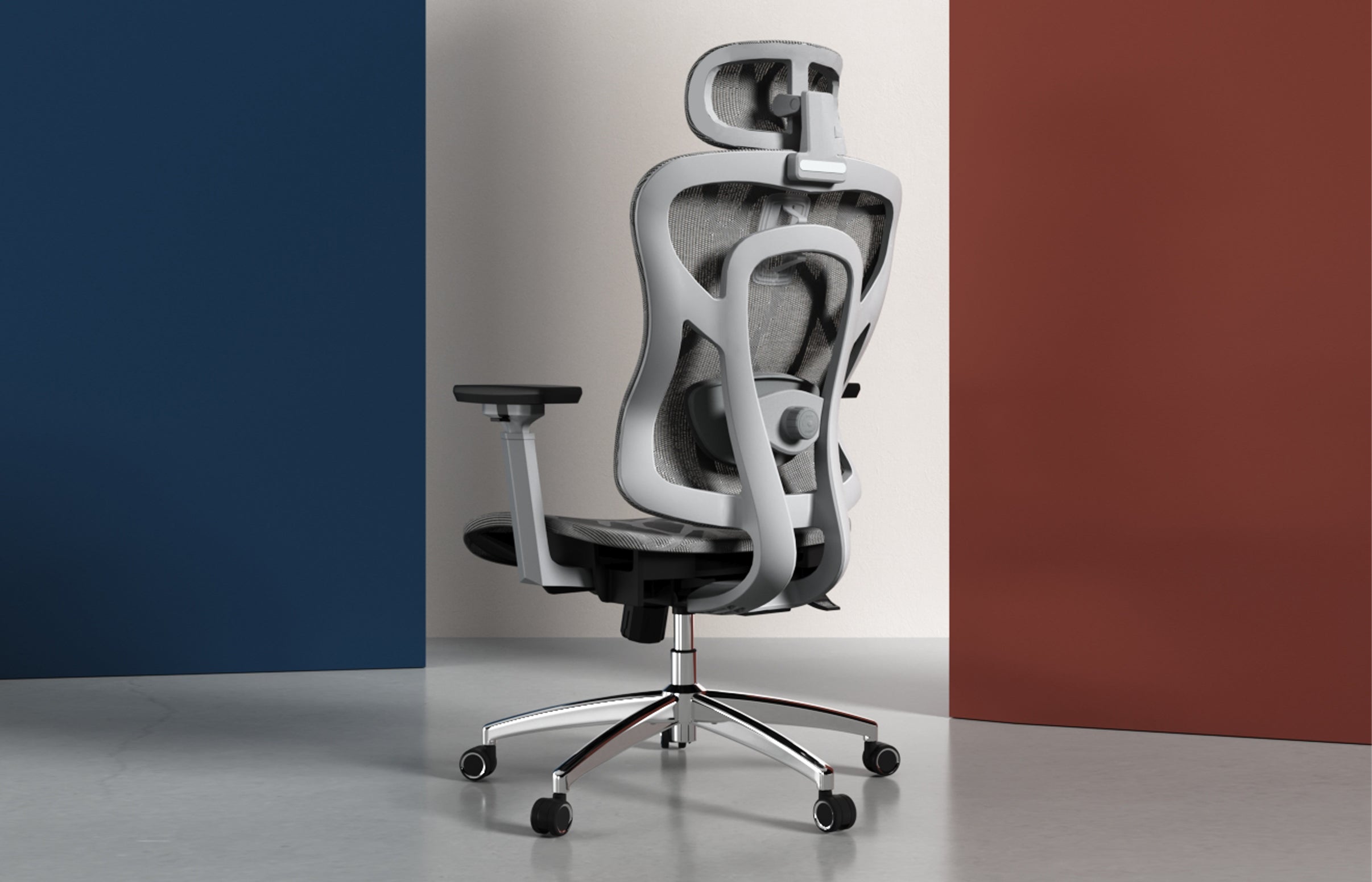
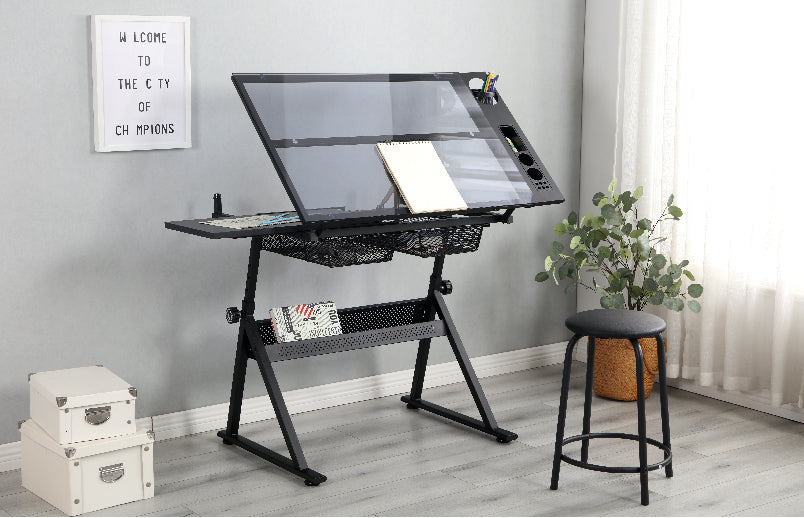

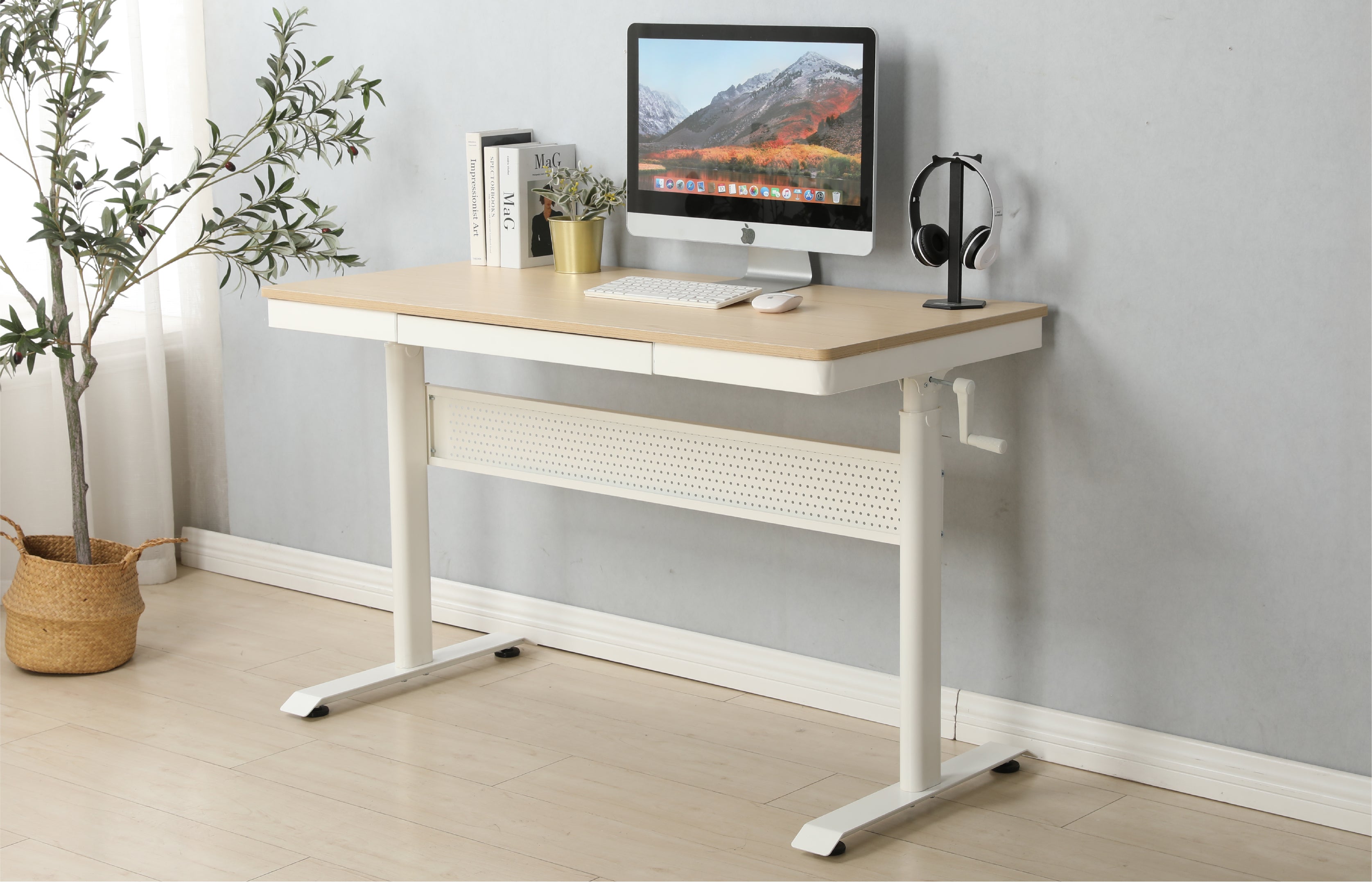







 United States
United States
Leave a comment